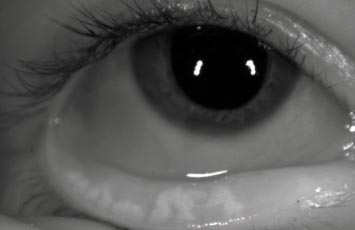 |
Patients with SJS often deal with dry eye symptoms that typically result from MGD induced by their condition. Photo: Kambiz Silani, OD. Click image to enlarge. |
Stevens-Johnson syndrome (SJS) is a life-threatening disease affecting the skin and multiple mucous membrane sites. The most common ocular finding is dry eye, typically resulting from meibomian gland dysfunction (MGD). This recent study sought to determine the ways that the function and structure of meibomian glands are altered in patients with SJS. Their findings concluded that the various MGD parameters observed in the affected cohort correlate to the worsening of dry eye symptoms.
The prospective, cross-sectional study included 60 patients (120 eyes) with a diagnosis of SJS, 85% whose condition developed from a drug reaction. Participants underwent an evaluation where the following data was collected: Standard Patient Evaluation of Eye Dryness (SPEED) questionnaire, tear osmolarity, Keratograph 5M, LipiView, Schirmer's I, corneal staining, meibum expression score (0-3) and meibum quality score (0-3).
“The mean tear osmolarity (97 eyes), tear meniscus height, fluorescein tear breakup time, Schirmer’s test and corneal staining scores were 322.70mOsm/l, 0.17mm, 3.38 seconds, 6.62mm and 4.20, respectively,” the researchers wrote in their paper.
Nearly two-thirds (61%) of patients had no expressible glands, and the mean upper and lower lid gland loss was 77.4% and 76.7%, respectively. There were evident alterations in the meibomian glands and an increased incidence of dropout observed among patients with the disease.
“The degree of meibomian gland dropout (meiboscore) had a significant positive correlation with SPEED scores, ocular surface staining scores, meibum expressibility and quality scores, whereas it had a negative correlation with lipid layer thickness and fluorescein tear breakup time,” the researchers wrote.
In addition to MGD, patients with SJS also demonstrated clinical signs of aqueous tear deficiency, as shown by the various other subjective and objective dry eye parameters that correlated to worsening of dry eye symptoms in the cohort.
“Aqueous tear deficiency is manifested by high osmolarity, low Schirmer's value and decreased tear meniscus height,” the researchers explained. “In contrast, MGD is characterized by an anatomical gland loss and functional changes in quality and quantity of meibum on the ocular surface as evidenced by a low lipid layer thickness, low fluorescein tear breakup time, high meibum expression score and high meibum quality score.”
In conclusion, the researchers suggested “SJS patients need to be evaluated for MGD and managed appropriately to reduce the severity of MGD.”
Panjiyar M.Optom, Sadhu S, Shobha PS, et al. Structural and functional evaluation of meibomian glands and its correlation with dry eye parameters in stevens-johnson syndrome. Am J Ophthalmol. March 3, 2022. [Epub ahead of print]. |


